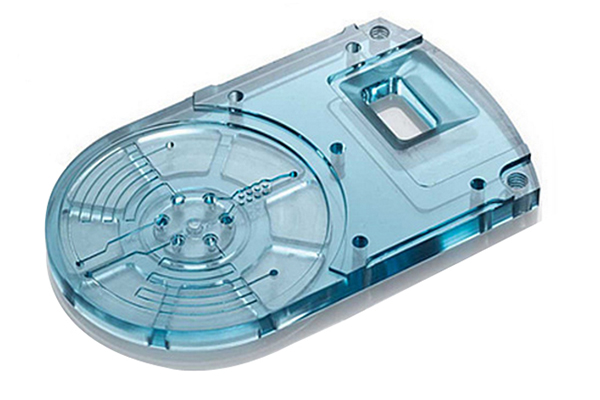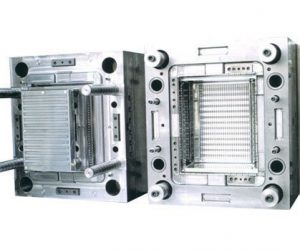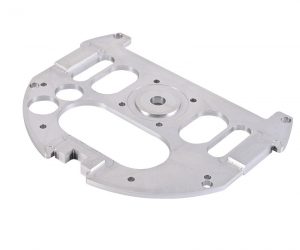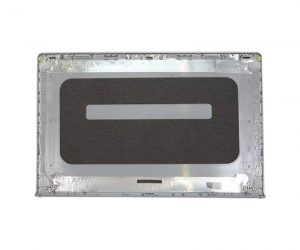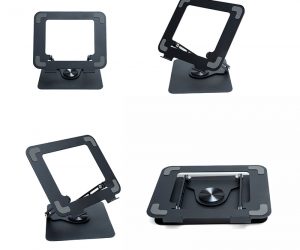1. Introduction: The SLA Advantage in Rapid Prototyping
Stereolithography (SLA), a revolutionary technology in additive manufacturing, has emerged as a game - changer in rapid prototyping. As the first commercially available 3D printing process, SLA has a long - standing reputation for its ability to produce highly detailed prototypes and functional parts with remarkable precision.
1.1 The Basics of SLA Technology
SLA operates on a relatively straightforward principle. It uses an ultraviolet (UV) laser to cure liquid resin layer by layer. A digital 3D model is sliced into thin cross - sectional layers. The UV laser then traces the pattern of each layer onto the surface of the liquid resin in a vat. As the laser hits the resin, it causes a photopolymerization reaction, transforming the liquid resin into a solid plastic. After one layer is complete, the build platform lowers slightly, and a new layer of resin is spread over the previously cured layer. This process repeats until the entire 3D object is formed.
1.2 Precision and Surface Finish: The Hallmarks of SLA
One of the most significant advantages of SLA is its micron - level precision. SLA printers can achieve layer thicknesses as small as 25 - 100 microns, depending on the model. This high level of precision allows for the creation of parts with extremely fine details. For Yigu Technology instance, in the production of dental crown prototypes, SLA can accurately reproduce the complex shapes and smooth surfaces required for a perfect fit in the patient's mouth.
The surface finish of SLA - printed parts is also outstanding, with surface roughness values as low as 1 - 5μm Ra. This smooth finish is often comparable to that of injection - molded parts, eliminating the need for extensive post - processing in many cases. In the automotive industry, SLA - printed parts can be used to create highly detailed interior components or aerodynamic prototypes with a sleek surface finish, reducing the time and cost associated with traditional manufacturing methods for surface finishing.
| 3D Printing Technology | Precision (Typical Layer Thickness) | Surface Finish (Ra) |
| SLA | 25 - 100 microns | 1 - 5μm |
| FDM (Fused Deposition Modeling) | 100 - 400 microns | 20 - 100μm |
| SLS (Selective Laser Sintering) | 100 - 150 microns | 10 - 25μm |
As shown in the Yigu Technology table above, SLA clearly outperforms other common 3D printing technologies in terms of both precision and surface finish. This makes it an ideal choice for applications where high - quality prototypes are essential for design evaluation, functionality testing, and market - ready product demonstrations.
2. Technical Foundations of SLA Rapid Prototyping
2.1 The SLA Process Explained
The SLA process is a complex yet precisely orchestrated sequence of steps that bring digital 3D designs to life.
1. Resin Preparation
The first step in the SLA process is filling a vat with photosensitive resin. This resin is the building block of the entire process, and its properties are crucial. Different types of resins are available, each with its own set of characteristics such as hardness, flexibility, and heat resistance. For Yigu Technology example, in a dental application, a biocompatible resin would be used to ensure safety when the printed part comes into contact with the human body. Resins also vary in viscosity, which can affect the speed and quality of the printing process. A low - viscosity resin allows for faster layer spreading but may require more careful handling to prevent leakage in the vat.
2. Laser Scanning
Once the resin is in place, a UV laser takes center stage. The laser is directed by a computer - controlled system that traces the 2D cross - sectional patterns of the 3D model onto the surface of the resin. The laser's energy causes the resin molecules to polymerize, transforming the liquid resin into a solid plastic. The precision of the laser is remarkable. It can create features as small as a few microns, enabling the production of highly detailed parts. In the production of micro - mechanical components, the laser can accurately trace the tiny channels and gears within the resin, resulting in a functional prototype with intricate details.
3. Layer Deposition
After one layer is cured, the build platform lowers incrementally, typically by a distance equal to the layer thickness (ranging from 25 - 100 microns). This allows a new layer of resin to flow over the previously cured layer. A recoater, often a blade - like mechanism, spreads the resin evenly across the surface to ensure a consistent layer thickness. The adhesion between layers is critical. Special additives in the resin and precise control of the curing process help to ensure that each new layer bonds firmly to the previous one. In the creation of a large, multi - layered prototype, such as an automotive engine cover mock - up, the proper adhesion between layers ensures the structural integrity of the final part.
4. Support Structure Removal
Once the printing is complete, the part often has support structures that were necessary during the printing process to keep the part stable. These supports can be either soluble or require manual removal. Soluble supports are convenient as they can be dissolved in a specific solvent, leaving the printed part clean. However, manual removal may be more time - consuming and requires careful handling to avoid damaging the part. For Yigu Technology example, in the case of a complex, overhanging part, the supports are designed to hold the overhangs in place during printing. After printing, these supports need to be removed carefully to reveal the final shape of the part.
5. Secondary Curing
The final step is secondary curing, where the printed part is exposed to additional UV light. This ensures that any remaining uncured resin is fully polymerized, enhancing the part's mechanical properties. The secondary curing process can be carried out in a specialized UV curing chamber. In the production of high - performance parts, such as aerospace components, thorough secondary curing is essential to ensure that the part can withstand the demanding conditions it will encounter.
2.2 Material Advancements
Over the years, significant advancements have been made in SLA resins, expanding the range of applications for SLA rapid prototyping.
High - Temperature Resins
One notable development is the creation of high - temperature resins. For Yigu Technology example, DSM Somos® 12120 can withstand temperatures up to 126°C. This makes it ideal for applications in the automotive industry, particularly for underhood testing. Components in the engine compartment are exposed to high temperatures, and parts printed with high - temperature resins can accurately simulate the performance of the final production parts in these extreme conditions. In a study comparing traditional materials with high - temperature SLA resins for automotive underhood prototypes, it was found that the SLA - printed parts made with resins like DSM Somos® 12120 provided more accurate functional testing results due to their ability to maintain structural integrity at high temperatures.
| Resin Type | Temperature Resistance | Ideal Applications |
| DSM Somos® 12120 | 126°C | Automotive underhood testing, aerospace components testing in high - temperature environments |
| Standard Resin | Up to 60 - 80°C | General prototyping, consumer product design evaluation |
Biocompatible Resins
Biocompatible resins have opened up new possibilities in the medical field. Formlabs® Clear Resin meets ISO 10993 standards, which means it is safe for use in medical applications. This resin can be used to create medical implants, prosthetics, and surgical guides. In a case study in a dental clinic, Formlabs® Clear Resin was used to print custom - fit dental crowns. The biocompatibility of the resin ensured that there were no adverse reactions when the crowns were placed in patients' mouths, and the high - precision printing capabilities of SLA technology allowed for a perfect fit.
Elastomeric Resins
Elastomeric resins, such as Smooth - On® ProtoFlex, mimic the properties of rubber. These resins are used to create flexible prototypes. For example, in the development of a new type of gasket for a plumbing fixture, Smooth - On® ProtoFlex can be used to print a prototype gasket. The flexibility of the resin allows engineers to test the gasket's sealing performance under different conditions, ensuring that the final product will function effectively. The Yigu Technology table below shows a comparison of the key properties of different types of SLA resins:
| Resin Type | Hardness | Flexibility | Biocompatibility | Temperature Resistance |
| High - Temperature Resins (e.g., DSM Somos® 12120) | High | Low | No | High (126°C) |
| Biocompatible Resins (e.g., Formlabs® Clear Resin) | Medium | Medium | Yes | Moderate (up to 80 - 90°C) |
| Elastomeric Resins (e.g., Smooth - On® ProtoFlex) | Low | High | No | Low (up to 60 - 70°C) |
These material advancements have significantly broadened the scope of SLA rapid prototyping, enabling the production of high - quality prototypes for a wide range of industries with diverse requirements.
3. SLA vs. Competing RP Technologies: A Comparative Analysis
While SLA offers numerous advantages, it's essential to compare it with other competing rapid prototyping (RP) technologies to understand its true position in the market. Let's take a closer look at how SLA stacks up against Fused Deposition Modeling (FDM) and Selective Laser Sintering (SLS).
3.1 SLA vs. FDM
Fused Deposition Modeling (FDM) is another popular 3D printing technology. It works by extruding melted thermoplastic filament through a nozzle, layer by layer, to build up the 3D object.
Precision and Surface Finish
As mentioned earlier, SLA has a significant edge in terms of precision. With layer thicknesses as small as 25 - 100 microns and an accuracy of ±0.05 - 0.1mm, it can create parts with much finer details compared to FDM, which typically has layer thicknesses in the range of 100 - 400 microns and an accuracy of ±0.1 - 0.3mm. In the production of a small, detailed electronic component prototype, an SLA - printed part would accurately reproduce the tiny grooves and connectors, while an FDM - printed part might have a more rugged and less precise finish.
The surface finish of SLA parts is also far superior. SLA parts have a surface roughness (Ra) of 1 - 5μm, resulting in a smooth, almost glass - like surface. FDM parts, on the other hand, have a surface roughness of 20 - 100μm, which gives them a more textured, "stepped" appearance, especially on curved surfaces. This makes SLA more suitable for applications where aesthetics and a smooth surface are crucial, such as in the production of jewelry prototypes or consumer product casings.
Material and Cost
SLA uses liquid resins, which come in a variety of types, each with specific properties. However, the range of available SLA resins is more limited compared to the vast array of thermoplastics used in FDM, such as PLA, ABS, PETG, and more. FDM is known for its relatively low - cost entry - level printers, which can be as inexpensive as a few hundred dollars for a basic desktop model. In contrast, entry - level SLA printers start at around $20,000. Additionally, SLA resins are generally more expensive per unit volume than FDM filaments. But for high - precision, small - scale prototyping, the cost of SLA can be justified by the quality of the results.
3.2 SLA vs. SLS
Selective Laser Sintering (SLS) uses a high - power laser to sinter powdered materials, such as polymer or metal powders, into a solid object.
Build Process and Support Requirements
One of the key differences between SLA and SLS is the build process. In SLS, the powder bed provides natural support for overhanging structures, eliminating the need for additional support structures in most cases. This can simplify post - processing. In SLA, support structures are often necessary to hold the part in place during printing, and these supports need to be removed after printing, which can be time - consuming and may require careful handling to avoid damaging the part. However, SLA generally has a faster build speed compared to SLS. SLA printers can build at a rate of 20 - 50 mm/h, while SLS printers typically have a build speed of 10 - 20 mm/h.
Material and Mechanical Properties
SLS can work with a wide range of materials, including various polymers, metals, and even ceramics. The parts produced by SLS often have good mechanical properties, especially in terms of strength and durability. For Yigu Technology example, SLS - printed nylon parts are known for their toughness. SLA, while having a more limited material selection in terms of resin types, offers a high level of precision and surface finish. SLA - printed parts can be made with high - temperature, biocompatible, or elastomeric resins, but their mechanical properties may not be as robust as those of SLS - printed parts in some cases, especially when it comes to materials like metal - based SLS parts.
| Parameter | SLA | FDM | SLS |
| Material Type | Liquid Resins | Thermoplastics | Polymer/Metal Powders |
| Precision | ±0.05–0.1mm | ±0.1–0.3mm | ±0.1–0.2mm |
| Surface Finish (Ra) | 1–5μm | 20–100μm | 10–20μm |
| Build Speed | 20–50 mm/h | 50–100 mm/h | 10–20 mm/h |
| Post-Processing | Support Removal + Curing | Support Removal | Minimal |
| Cost (Entry-Level) | \(20k–\)100k | \(5k–\)50k | \(100k–\)500k |
In Yigu Technology summary, SLA stands out for its high precision, excellent surface finish, and relatively fast build speed, making it an ideal choice for applications where these factors are crucial. However, depending on the specific requirements of a project, such as material type, cost - effectiveness, or large - scale production, other technologies like FDM or SLS may also be viable options.
FAQ
Can SLA Be Used for Low - Volume Production?
A: Yes. High - performance resins like Accura® Xtreme can withstand 100MPa tensile strength, making them viable for low - volume production.
How Does SLA Compare to DLP in Terms of Speed?
A: DLP cures entire layers at once, achieving 2–3x faster builds than SLA for large parts. However, SLA offers superior edge definition.
How Sustainable Is SLA in Terms of Material Waste and Environmental Impact?
A: SLA generates 90% less waste than traditional machining. Bio - based resins like Plant - based PLA reduce carbon footprints by 40%. This structured approach combines technical depth, real - world data, and forward - looking insights to position SLA as a critical driver of innovation in rapid prototyping. By balancing precision, speed, and sustainability, SLA continues to redefine what’s possible in modern manufacturing.
